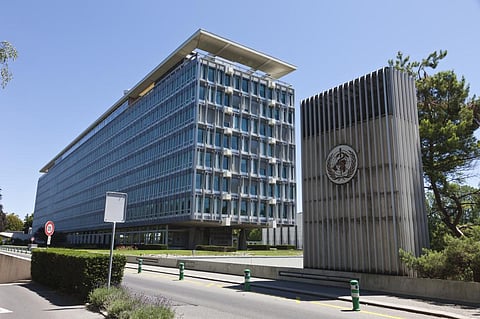

The budget for the World Health Organization was agreed upon by its member states on May 23, 2023 at $6.83 billion (approximately Rs 56,567 crore) for the next two years (2024-2025) at the ongoing 76th World Health Assembly (WHA).
This figure is the most ambitious to date and includes a historic 20 per cent increase in assessed contributions. This hike resulted from the 75th WHA deliberations, where countries agreed to sustainability finance the WHO.
Assessed contributions are essentially membership fees paid by countries to remain members of the WHO and are calculated based on the country’s wealth and population. However, the share of assessed contributions in financing the WHO has been on a steep decline over the past few years.
As per the global health body, “assessed contributions have declined as an overall percentage of the programme budget and have, for several years, accounted for less than one-quarter of the organisation’s financing.”
Voluntary contributions — from member states and other partners — fill the lacunae created by assessed contributions over the years, now accounting for more than three-quarters of the WHO’s financing.
There are three subtypes of voluntary contributions. First are the core voluntary contributions — accounting for 4.1 per cent of all voluntary contributions — which are fully unconditional, essentially allowing the WHO full “discretion on how these funds should be used to fund the organisation’s programmatic work”.
In 2020-2021, Germany ($1,268 million), the Bill and Melinda Gates Foundation ($751 million), the United States ($693 million), the United Kingdom ($487 million) and the European Commission ($466 million) were top contributors to the WHO.
The US has historically been one of the largest donors to the WHO, with 65 per cent of the $693 million it gave to the global health body being voluntary contributions.
However, the story isn’t entirely straightforward. The US allegedly threatened to “withhold funding to WHO unless its suggested language on ‘earmarking’ contributions was agreed in the decision text on the replenishment proposal,” the newsletter Geneva Health Files reported May 23, 2023.
Citing sources who were party to the deliberations around a new replenishment mechanism due to be discussed later this week by the WHA, the global health body gave into the demands made their demands.
However, US officials have denied these claims, terming them “inaccurate.” Earmarked contributions by donor countries are essentially funds whose use by the WHO is predetermined for specific projects or regions.
“Sources said that this will have deep implications for future deliberations since it is for the first time that earmarking of contributions will be referenced in a WHO resolution when this proposal is adopted later this week at the WHA,” the Geneva Health Files argued.
This opens the door for donor countries and other actors to push for less flexible financing for WHO, based on such adopted language at the Assembly, the report further said.
The overreliance of the WHO on voluntary contributions signals other issues in its governance.
Between April 2022 and April 2023, assessed contributions totalled $956.9 million (12.1 per cent of total revenue to date), while voluntary contributions totalled $6.92 billion (87.5 per cent of total revenue to date), and “Other revenue” totalled $28.1 million (0.4 per cent).
The global health body has itself argued how this skewed balance “impedes WHO’s ability to provide sustained and effective technical cooperation with countries and to achieve the Triple Billion targets, especially in relation to universal health coverage and promoting healthier populations, areas that have traditionally received less support from earmarked contributions.”
The Triple Billion targets are a measurement and a policy strategy to improve the health of all by 2023.
The key goals are to ensure “1 billion more people benefitting from universal health coverage, 1 billion more people better protected from health emergencies and 1 billion more people enjoying better health and well-being.”